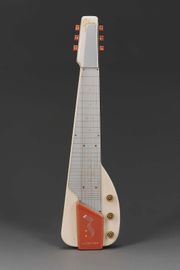Difference between revisions of "Monel"
| (3 intermediate revisions by the same user not shown) | |||
| Line 6: | Line 6: | ||
Early desginations were specified as: | Early desginations were specified as: | ||
| − | + | * S Monel has 3.75% silicon and is used for castings and valves. | |
| − | + | * K Monel is an age hardened version of the natural alloy. | |
| − | + | * R Monel contains 67% nickel, 30% copper and 0.35% sulfur. It has high strength. | |
| − | + | * H Monel contains 63% nickel, 31% copper, 3% silicon, 2% iron, 0.7% manganese. | |
| − | + | * Z Monel contains 98% nickel. | |
| − | |||
| − | |||
| − | |||
| − | |||
More recent designations are numbered as: | More recent designations are numbered as: | ||
| Line 20: | Line 16: | ||
{|class="wikitable" | {|class="wikitable" | ||
! Trade Name | ! Trade Name | ||
| − | ! | + | ! ASTM |
Alloy type | Alloy type | ||
| − | ! | + | ! Unified numbering<br>system (UNS) |
! %Cu | ! %Cu | ||
! %Al | ! %Al | ||
Latest revision as of 12:10, 23 August 2022
Description
[Special Metals Corporation, formerly Inco] A registered trademark for a series of metal alloys composed of Nickel and Copper. In 1901, Monel was created by Robert Crooks Stanley in 1901, who worked for the International Nickel Company. It was patented in 1906. As a natural alloy, the first Monel was composed of about 67-70% nickel, 25-29% copper with small amounts of Iron, Manganese, and/or Silicon. From 1909 to the mid-1950s, variations of this bright white metal were popular for architectural applications (sinks, countertops, grillwork, roofing, etc.) because it was stronger than steel, readily fabricated, and corrosion resistant. Currently, Monel alloys are synthetically mixed and used as marine parts and nontarnishing staples. Monel is used as the material for valve pistons or rotors in some higher quality musical instruments such as trumpets, tubas, French horns as well as for mandolin and electric bass strings (Gibson Guitar 1930 and RotoSound 1962). Additionally Monel was used for the strings on guitars by Gibson Guitars.
Early desginations were specified as:
- S Monel has 3.75% silicon and is used for castings and valves.
- K Monel is an age hardened version of the natural alloy.
- R Monel contains 67% nickel, 30% copper and 0.35% sulfur. It has high strength.
- H Monel contains 63% nickel, 31% copper, 3% silicon, 2% iron, 0.7% manganese.
- Z Monel contains 98% nickel.
More recent designations are numbered as:
| Trade Name | ASTM
Alloy type |
Unified numbering system (UNS) |
%Cu | %Al | %Ti | %Fe | %Mn | %Si | %Ni |
|---|---|---|---|---|---|---|---|---|---|
| Monel 400 | B 127, B 164 | N04400 | 28–34 | 2.5 max | 2.0 max | 0.5 max | 63 min | ||
| Monel 401 | N04401 | 28–34 | 2.5 max | 2.0 max | 63 min | ||||
| Monel 404 | N04404 | Rem | 0.05 max | 0.5 max | 0.1 max | 0.1 max | 52–57 | ||
| Monel K-500 | B 865 | N05500 | 27–33 | 2.3–3.15 | 0.35–0.85 | 2.0 max | 1.5 max | 0.5 max | 63 min |
| Monel 405 | B 164 | N04405 | 28–34 | 2.5 max | 2.0 max | 0.5 max | 63 min |
Synonyms and Related Terms
Monel-Plymetyl; monel (Fr.); Monelmetall (Deut.)
Physical and Chemical Properties
Monel alloys can be finished as a white silver with a high polish, as a pewter-like matte gray or with a thin black oxide layer. Indoors, it oxidizes to form a clear layer, but can form a gray-green film outdoors.
Nickel metal and alloys are skin and respiratory sensitizers, as well as carcinogens.
Resources and Citations
- Derek Trelstad, "Monel", in Twentieth-Century Building Materials, T. Jester (ed.), McGraw-Hill: New York, 1995.
- G.S.Brady, Materials Handbook, McGraw-Hill Book Co., New York, 1971 Comment: p. 400
- Dictionary of Building Preservation, Ward Bucher, ed., John Wiley & Sons, Inc., New York City, 1996
- Thomas C. Jester (ed.), Twentieth-Century Building Materials, McGraw-Hill Companies, Washington DC, 1995
- Richard S. Lewis, Hawley's Condensed Chemical Dictionary, Van Nostrand Reinhold, New York, 10th ed., 1993
- Pam Hatchfield, Pollutants in the Museum Environment, Archetype Press, London, 2002
- Random House, Webster's Encyclopedic Unabridged Dictionary of the English Language, Grammercy Book, New York, 1997
- The American Heritage Dictionary or Encarta, via Microsoft Bookshelf 98, Microsoft Corp., 1998
- Website: http://www.incoltd.com/aboutinco/centennialHistory.asp# - Rolling mill built in WV for production of Monel in 1921
- Website: www.hpalloy.com/datasheets/400
- Wikipedia at [[|https://en.wikipedia.org/wiki/Monel%7CMonel]]).
